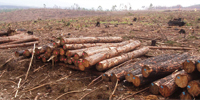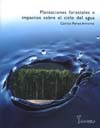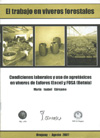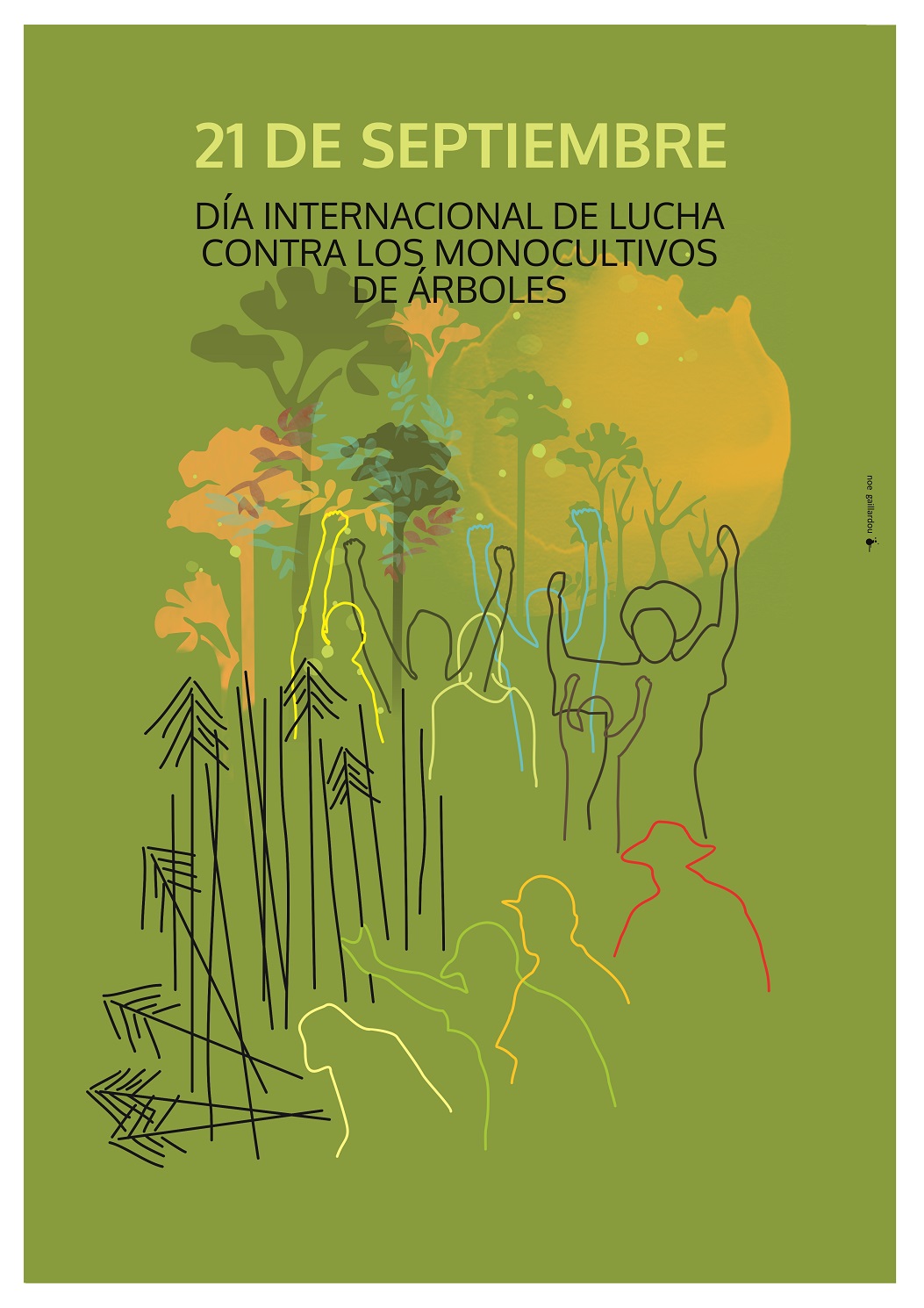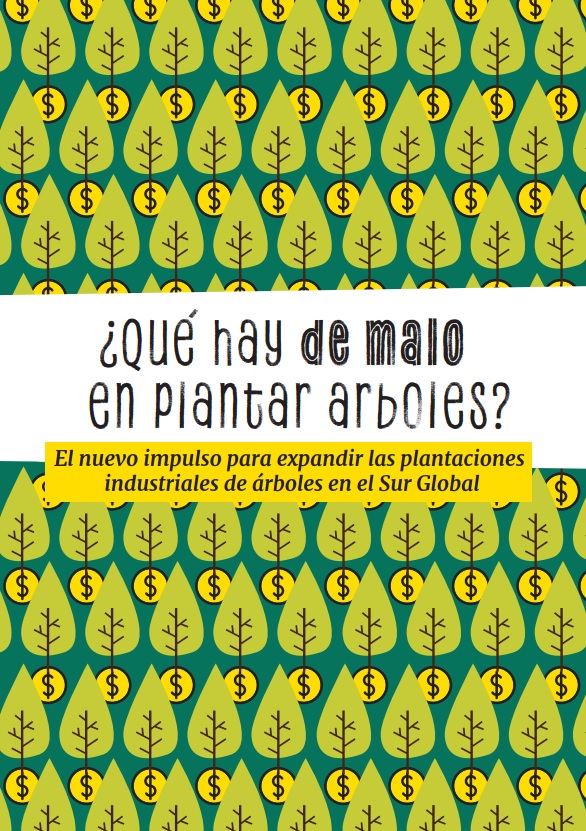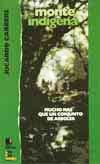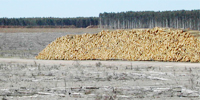Uruguay has been one of the countries in the region that has best and fastest fulfilled the duties others have dictated.
Already in 1951, a joint FAO-World Bank mission made a series of recommendations regarding the country’s forestry development, which was the basis for the forestry laws adopted in 1968 and 1987. Their vision implied the promotion of suitable species for the timber industry in the framework of an export model, in which forest management is just another business or manufacturing activity.
In 1985, the Japanese International Cooperation Agency (JICA) came to this country to study the economic and financial feasibility of establishing a Kraft pulp mill. Its influence was so great that the National Forestry Plan adopted by the Government in July 1988 is explicitly based on the “Master plan study for the establishment of tree plantations and use of planted wood [sic] in the Oriental Republic of Uruguay”, published by JICA in March of that same year, promoting the mass plantation of pine and eucalyptus trees.
Later, in 1989, the World Bank provided resources to enable the forestry export model of eucalyptus logs for pulp to take root. This injection of money made it possible to grant a series of benefits to the forestry sector: tax exemptions, partial refund of plantation costs, long-term soft loans, duty cuts on the import of machinery and vehicles, construction of roads and bridges, equal benefits for foreign investors. Investment in the sector soared, at the expense of subsidies paid by the rest of society (today estimated at over 400 million dollars) and the destruction of grazing lands and the few remaining areas of indigenous forest in the hilly areas. Another consequence was the concentration of landholding, in particular by foreigners, added to increased rural migration.
The “green desert” model of tree plantations was installed in Uruguay and the promises of employment were never fulfilled. According to official data from the Agricultural and Livestock Census, it generated fewer permanent jobs that extensive cattle-raising, so far considered to be the least efficient regarding jobs generated per hectare. Furthermore, the few jobs that were created were done so at the expense of those lost in activities that were substituted, and with the same or worse quality working conditions and remuneration.
With this background and in this context, two projects were submitted in 2003 –one by the Spanish company Ence and the other by the Finnish company Botnia working in association with UPM/Kymmene– for the installation of pulp mills on the Uruguay river, on the border with Argentina, at 5 km from the city of Fray Bentos and a little further from the “Las Cañas” tourist centre.
The Ence proposal – with a dubious history of environmental crimes in its country of origin – to install an ECF pulp mill (see in this same bulletin the article on “Obtaining pulp”) has been resisted by Uruguayan and Argentine environmentalists on both sides of the Uruguay River (see WRM Bulletin No. 75). Botnia, with white gloves and an offer to invest 1 billion dollars that, in the devalued and impoverished Uruguay has made more than one mouth water, also proposes to install an ECF pulp mill. In its favour, it has a “cleaner” image, a result of the strict environmental regulations in its own country and a more intelligent approach, with participative trends, that has won it some support. However, conscious of the problems it may have to face, it concerned itself with achieving the adoption by Uruguayan Parliament of an “Agreement with the Government of Finland regarding the promotion and protection of investment”, which is in fact an agreement with Botnia. By means of this agreement, the company ensures the constant support and protection of the Uruguayan Government for its investments, even foreseeing the restitution of possible losses due, among other things, to “demonstrations.”
This is a way of taking shelter before the rain, and this is not in vain. In view of the fear expressed over the possible pollution of the Uruguay River and of the neighbouring area, the company has insisted that the projected pulp mill will be totally innocuous, but it is undeniable that these mega-projects involve major risks. More so in these regions where it is well known that the environmental monitoring by a dismantled State – such as the Uruguayan State – is weak.
The strong point of the companies and those that support them is the promise of creating jobs in a region with a very high level of unemployment. However, the accounting is incomplete, as it does not consider the local sources of jobs that will be lost due to the possible impact of the pulp mills – ranging from the characteristic “rotten egg” smell to the pollution of the river – in the tourist line, fishing, organic horticulture, beekeeping. Furthermore, as stated by the Botnia Company itself, out of the promised 300 jobs, 292 will be held by very qualified personnel, and therefore for most of the population the situation will remain unchanged.
In the meanwhile, local, national and regional society has made its dissenting voice heard. The integration of Uruguayans and Argentines concerned over the possibility of installing one (or two) pulp mills, polluting the water and air in the Uruguay River basin, shared by both countries, has taken shape in the form of a Socio-Environmental Network. Among its many activities, in October last year, the Network organized a meeting between Uruguayans and Argentines, in the middle of the international bridge that joins both countries, near the city of Fray Bentos, to express their rejection of the plant. This action, hindered by the Uruguayan and Argentine authorities, became public knowledge and was even discussed at the Ministries of Foreign Affairs. It was taken up by the media, putting into the headlines an issue that had so far been silenced (see WRM bulletin No. 75).
In turn, a group of Uruguayan organizations, both local and national, are pledged to prevent the installation of these pulp mills and are carrying out various activities with this aim, seeking to generate awareness regarding the impacts they imply. They are also pointing out that this enterprise would help to consolidate and strengthen the present model of monoculture tree plantations that has been so socially and economically harmful to the country and to its people.
In this context, the environmentalists have also established international links with organizations and individuals in Spain, Finland and Sweden, with the aim of exchanging information, obtaining support and coordinating action in the countries where the companies involved have their headquarters.
At the same time, the organizations opposing the pulp mills have suggested alternatives to the 600,000 hectares of monoculture tree plantations resulting from the promotion of plantations by the State. In this respect, they have set out the need for preparing a national plan for the development of the timber industry (ranging from wood products to the construction of wooden houses), generating stable workstations to provide the people who today most need it with work and better living conditions. Which is precisely what these pulp mega-projects cannot offer.
Source: WRM’s bulletin Nº 83, June 2004


